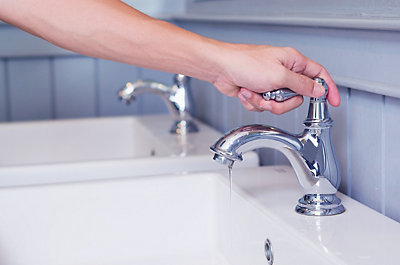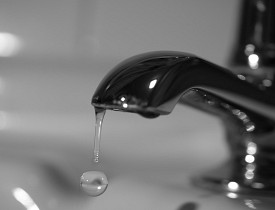Which It's Crucial to Mend a Leaking Faucet
Which It's Crucial to Mend a Leaking Faucet
Blog Article
Just how do you actually feel when it comes to 4 Common Reasons for a Leaky Faucet?

Dripping faucets may feel like a minor trouble, but their impact exceeds simply the annoyance of the noise. From drainage to sustaining unneeded financial costs and health and wellness risks, disregarding a leaking tap can cause numerous effects. In this article, we'll delve into why it's essential to address this common home issue promptly and efficiently.
Wastefulness of Water
Ecological Effect
Leaking taps add substantially to water waste. According to the Environmental Protection Agency (EPA), a single tap leaking at one drip per second can waste greater than 3,000 gallons of water annually. This not only strains water sources however also affects ecosystems and wild animals based on them.
Financial Prices
Boosted Water Bills
Past the environmental influence, dripping taps can inflate water costs substantially. The gathered wastage in time converts right into higher utility expenditures, which could have been avoided with timely repairs.
Prospective Home Damages
Moreover, extended trickling can lead to harm to components and surface areas surrounding the faucet. Water build-up can trigger staining, deterioration, and also architectural issues if left unattended, resulting in extra repair service expenses.
Wellness Problems
Mold And Mildew and Mold Growth
The continuous existence of wetness from a leaking faucet creates an optimal atmosphere for mold and mildew development. These fungi not only compromise interior air top quality however likewise pose health threats, especially for individuals with respiratory problems or allergies.
Waterborne Diseases
Stationary water in trickling faucets can become a breeding place for germs and various other microorganisms, increasing the threat of waterborne diseases. Impurities such as Legionella germs grow in stagnant water, possibly resulting in significant ailments when ingested or breathed in.
DIY vs. Expert Fixing
Advantages and disadvantages of Do It Yourself Repair
While some may attempt to take care of a trickling faucet themselves, DIY repair services feature their own set of difficulties. Without appropriate expertise and devices, do it yourself attempts can intensify the problem or cause insufficient fixings, lengthening the trouble.
Benefits of Working With an Expert Plumber
Working with a specialist plumber makes certain that the underlying source of the dripping tap is dealt with effectively. Plumbings possess the know-how and equipment to identify and fix tap issues effectively, conserving time and decreasing the risk of further damage.
Step-by-Step Guide to Taking Care Of a Dripping Tap
Devices Needed
Prior to trying to deal with a trickling tap, collect the needed devices, consisting of an adjustable wrench, screwdrivers, replacement components (such as washing machines or cartridges), and plumber's tape.
Usual Tap Issues and Their Solutions
Determine the type of faucet and the details concern triggering the drip. Typical problems consist of damaged washers, rusty valve seats, or damaged O-rings. Describe producer instructions or on-line tutorials for step-by-step advice on repair services.
Preventive Measures
Normal Maintenance Tips
To stop leaking taps, carry out routine upkeep such as cleaning up aerators, evaluating for leaks, and changing worn-out parts promptly. Additionally, consider installing water-saving devices or updating to extra efficient fixtures.
Importance of Prompt Repairs
Resolving trickling taps as soon as they're noticed prevents more water waste and potential damages, inevitably saving both water and cash in the future.
Influence On Building Value
Perception of Well-Maintained Building
Preserving a residential property in good condition, including attending to maintenance issues like leaking faucets, improves its regarded value and charm amongst possible purchasers or lessees.
Influence on Resale Value
Properties with well-kept plumbing components, consisting of taps, command higher resale values in the real estate market. Addressing leaking faucets can contribute to a positive perception during property assessments and negotiations.
Ecological Duty
Individual Payment to Preservation
Taking duty for repairing leaking taps straightens with broader efforts toward water conservation and ecological sustainability. Every person's activities jointly make a significant impact on preserving precious resources.
Sustainable Living Practices
By focusing on punctual fixings and taking on water-saving habits, people add to lasting living methods that benefit both present and future generations.
Conclusion
Addressing a trickling tap exceeds mere comfort; it's a necessary step toward preserving water, minimizing financial prices, and securing health and property. Whether via DIY fixings or expert assistance, acting to take care of dripping taps is a small yet impactful method to promote accountable stewardship of sources and contribute to a healthier, extra sustainable future.
How to Fix a Leaky Faucet: Step-by-Step Repair Guide
A leaky faucet may seem like a simple annoyance, but if it's not fixed promptly, that leak could cost hundreds to potentially thousands. From water damage to mold, mildew, and high water bills, even a tiny leak can be catastrophic if left unattended. Damage like this can even affect the overall value of your home, so it's important to take the right approach for leaky faucet repair. You may need the help of a plumber in some cases, but we've got a few tips you can try on how to fix a leaky faucet before calling the pros.
Four Faucet Types
When you're learning how to fix a leaky faucet, the first step is knowing what kind of faucet you're working with! There are four common types.
Cartridge Faucets
Cartridge faucets come in one- or two-handled varieties. In one-handled cartridge faucets, hot and cold water combines in a single cartridge. In the two-handled versions, hot and cold water are controlled separately and mixed in the faucet.
Ball Faucets
Ball faucets have a single lever you push up and down to adjust the pressure and rotate to change the temperature. A slotted metal ball controls the amount of water allowed into the spout.
Compression Washer Faucets
They're the oldest type of faucet, but they're still used in many homes — especially older ones. Compression faucets have two separate handles that, when turned, raise or lower the washer that seals a water valve. This valve stops water from flowing through the faucet when it is turned off.
Disc Faucets
Disc faucets rarely need to be repaired due to their maintenance-free design. The water flow is controlled by two discs — the upper one raises and lowers against a fixed lower disc, creating a watertight seal. If your disc faucet starts leaking, you may need to replace the seals or clean residue buildup from the inlets.
Fixing a Leaky Faucet
Step 1: Turn Off the Water
Whether you're learning how to fix a leaky bathtub faucet or how to fix a leaky kitchen faucet, always turn off the water supply to your working area when you're fixing a leak. The last thing you want is a flood added to your list of things to fix.
Look for the shutoff valves below your sink or around the tub and turn them clockwise to stop the water flow. If your faucet doesn't have shutoff valves, you may need to turn off the water for the whole house. Check to make sure it's off by turning the faucet on. If nothing comes out, you're ready to start the repair.
Step 2: Take Apart the Faucet
How you disassemble your faucet depends on the type of fixture you have. You can use a flathead screwdriver to remove the caps on top of the handle or handles for cartridge and compression faucets. Inside, you should see handle screws. Unscrew these with a screwdriver to remove the handle.
Disc- and ball-style faucets will typically have an inlet screw near the handle, and removing that will reveal the interior of the faucet.
Detach the Valve Stem
For cartridge- and compression-style faucets, you'll see the inner valve stem or cartridge once you remove the faucet handles. If you have a compression faucet, unscrew the brass valve stem. If you have a cartridge faucet, pull out the cartridge. If your cartridge has been in place for a while, it may require some tools or extra force to remove it due to mineral deposits.
Examine and Replace Parts
Once you've removed the parts, check them out to confirm what needs to be replaced. You may see corroded rubber washers, O-rings, stems, or cartridges. On a ball-style faucet, check the seats and springs for damage.
If you need to repair a leaky disc faucet, check the inlet and seals on the lower disc.
Once you determine what parts must be replaced, visit your local hardware store. Bring the damaged parts with you to ensure you can purchase the correct components to replace them.
Clean Valves and Faucet Cavity
If you've removed a stem or cartridge, you may notice mineral buildup in the faucet's threads. Use white vinegar to clean the valve seat by soaking it for a few minutes, then scrub it away with a soft toothbrush and rinse with warm water. You can also clean the interior of the faucet in the same way.
Reassemble the Faucet
Once your faucet is cleaned and the required parts have been replaced, it's time to reassemble it. Put the pieces back together and slowly turn the water supply back on. Doing this slowly is crucial because too much initial water pressure can damage the new hardware you've just installed.
https://homewarranty.firstam.com/blog/how-to-fix-leaky-faucet

I have been very curious about 4 Common Reasons for a Leaky Faucet and I hope you appreciated my entry. For those who appreciated our page plz make sure you remember to share it. Thanks for your time spent reading it.
Report this page